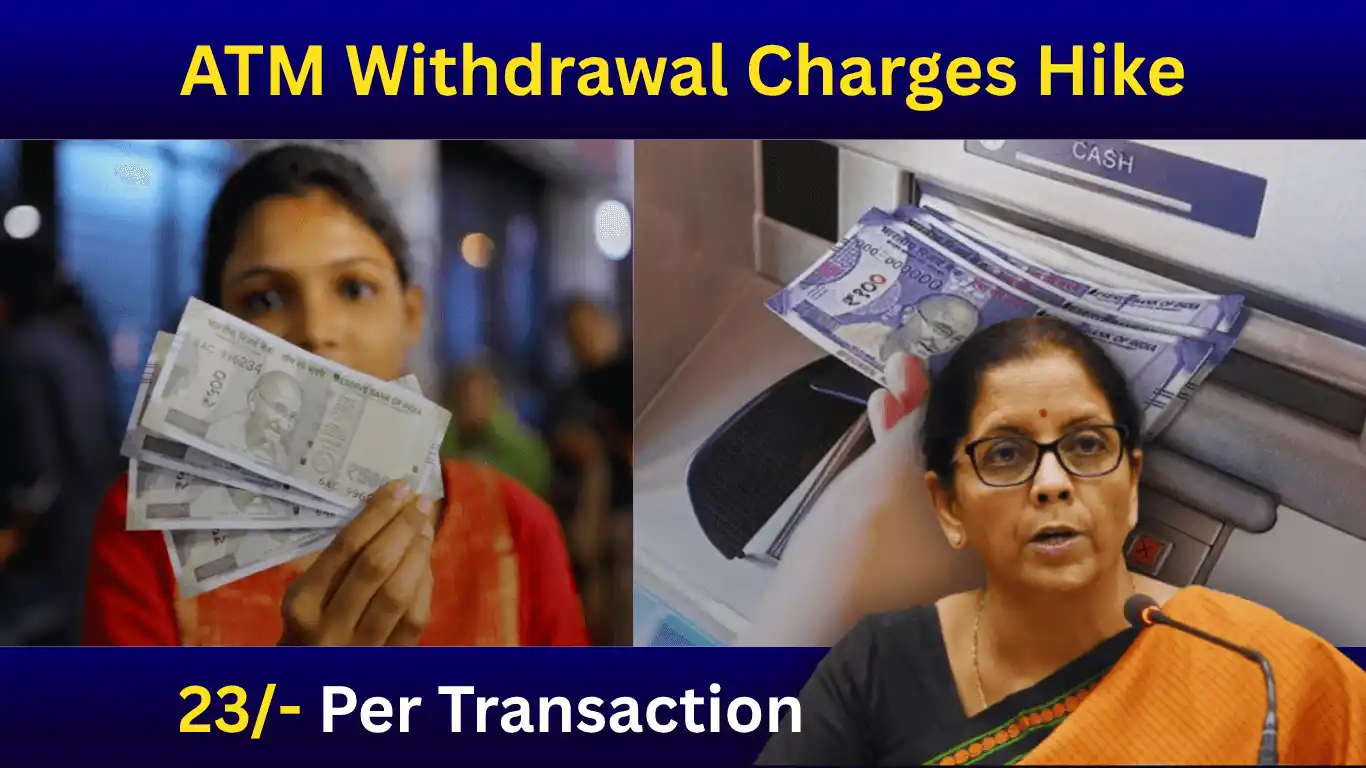The Reserve Bank of India (RBI) has increased the maximum ATM withdrawal fee to ₹23 per transaction for all savings account holders, effective from May 1, 2025. Customers will still enjoy five free transactions per month at their own‐bank ATMs, along with three free withdrawals at other‐bank ATMs in metro areas and five free withdrawals in non‐metro areas. There are no changes to the free transaction limits, making it crucial to track your ATM withdrawal usage to avoid unexpected fees.
What Are ATM Withdrawal Charges?
ATM withdrawal charges refer to the fees banks impose when you exceed the RBI‐mandated free monthly transaction limits at Automated Teller Machines (ATMs). These charges apply to both financial transactions like cash withdrawals and non‐financial transactions such as balance inquiries or mini‐statement requests once the free limit is crossed. The RBI’s move aims to help banks cover the rising operational and infrastructure costs associated with maintaining ATMs and ensuring secure, reliable service.
New Charges Effective May 1, 2025
- Fee After Free Limit: ₹23 per ATM withdrawal beyond the free monthly quota.
- Applicability: Charges apply at both own‐bank and other‐bank ATMs nationwide.
- Effective Date: The revised fee structure took effect on May 1, 2025, following RBI’s circular issued on March 28, 2025.(check)
Free ATM Transaction Limits
| ATM Type | Metro Cities | Non-Metro Cities | Own-Bank ATMs (All Areas) |
|---|---|---|---|
| Free Transactions/Month | 3 | 5 | 5 |
- Own-Bank ATMs: 5 free transactions per month (financial + non‐financial.
- Other-Bank ATMs (Metro): 3 free transactions per month.
- Other-Bank ATMs (Non-Metro): 5 free transactions per month.
Failed or declined transactions due to technical issues (e.g., ATM outages, communication errors) are not counted against your free limit.
Comparison: Before vs. After May 1, 2025
| Particulars | Before May 1, 2025 | After May 1, 2025 |
|---|---|---|
| Fee per Withdrawal (beyond free limit) | ₹21 per transaction | ₹23 per transaction |
| Free Transactions (metro) | 3 (other-bank) | 3 (other-bank) |
| Free Transactions (non-metro) | 5 (other-bank) | 5 (other-bank) |
Why Did the RBI Increase ATM Charges?
The RBI’s approval for higher ATM withdrawal charges stems from several factors:
- Escalating Maintenance Costs: Banks face rising expenses for ATM upkeep, including hardware upgrades, software updates, and security enhancements.
- Interchange Fee Alignment: The maximum interchange fee for cash withdrawals was raised to ₹19, with non‐financial transactions at ₹7, supporting banks’ settlement obligations.
- Ensuring Service Quality: Additional revenue helps banks maintain a large, well‐distributed ATM network and invest in uptime and customer service reliability.
Impact on Customers and Tips to Avoid Fees
While the ₹2 increase per ATM withdrawal may seem small, frequent transactions can add up quickly. Here are strategies to minimize costs:
- Plan Withdrawals: Consolidate cash needs to stay within your free transaction quota.
- Use Digital Payment Modes: Opt for UPI, debit card at PoS, or mobile wallets for small transactions instead of ATMs.
- Leverage Own-Bank ATMs: Prefer your bank’s ATMs to maximize free withdrawals.
- Monitor Usage: Regularly check your bank statement or mobile app alerts to track ATM withdrawals .
Final Thoughts
From May 1, 2025, all savings account holders in India need to be mindful of their ATM withdrawal habits to avoid the new ₹23 per‐transaction fee after free limits. By planning withdrawals, leveraging digital payments, and sticking to your own‐bank ATMs, you can manage your banking costs effectively and continue to enjoy convenient access to cash when you need it. Stay informed and withdraw wisely!








